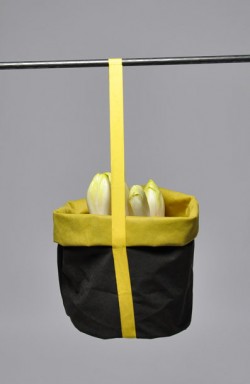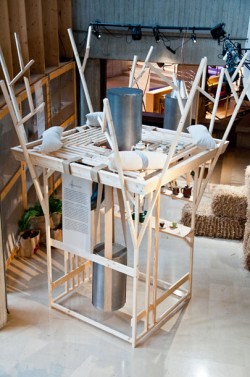Urban Agriculture 2013
In 2013 Students of ESAD of Reims concentrated on urban agriculture placing it in the context of the City of Reims and in the Reims 2020 project. Led by Patrick Nadeau, architect, designer and founder of the Plant design workshop, Sara Lubtchansky, town planner, and Nicolas Bonnenfant, landscape architect within the organization COLOCO, they were invited to explore the issue from their point of view as designers , placing themselves at the level of interaction between man and his environment. Projects as diverse as nursery gardens, ways to promote local production, the creation of networks between consumers and producers … have been devised. Often with an educational approach, several projects have sought to develop a methodical and temporal vision of the agricultural productivity cycle. Five projects were brought together having in common the desire to go beyond the purely market garden approach, by using practices from the past or from elsewhere in the world, to show that agriculture is an activity that can contribute to the development of trade and re-organize industrial production cycles. Originally designed to be independent they prove to be complementary and interdependent.
Bio-gas – Élodie Elsenberger, Marion Galisson Methane is also a product of rotting compost. Compost mixed with air makes humus which feeds the soil and produces heat. Mixed with hot water, it ferments and produces methane. This bio energy feeds the stove to cooks the vegetables. In Japan and Cambodia, cabins are heated with compost; in Rwanda and Benin, methane is used for cooking, while in Sweden, bio gas is produced industrially to heat houses and run cars.
Stills – Salassa Mitsui If fruit trees grew in the city … the city would be a village! So as not to throw out rotten fruit from our urban orchards and supermarkets, we could distill them and make fruit brandy or a small amount of alcohol to run an engine. Fire produces ashes to make bricks, creates heat or cooks a snack and creates a social well-being, allowing some time to think. What if the city adopted the rural traditions ?
Educational garden – Line Lieng et léa Wlodarczyk This project shows the children that each plant grows in a differently: the potato is earthed up, chicory is grown in the dark, the strawberry plants are layered and tomato plants climb…. These educational gardens in sacks of non- woven fabric are suspended along the walls of the school in order to follow the growth cycle of the
Compost bricks – Thomas Ballouhey Putting humus into a brick form: a brick of dry and carbonnés organic waste is composed of sawdust, fungal matter, dry leaves, paper, cardboard, coffee grounds, egg shells and ashes. Mixed, wet, compressed and then dried, the brick is compact and easy to carry; it comes back to life with compost and water in order to fertilize
Mushroom bed – Martin Laforêt
Mixture of industrial and amateur practice in 6 steps. Step 1: Develop the mycelium in a jar of sweet water Step 2: Fill sterile jars with cereals (maize, rye, oats, wheat …) Step 3: Make substrate with leftover fruit, organic bricks, fermenting dregs. Step 4: Deposit grains coated with mycelium on the substrate Step 5: Start the process of mushroom production in a dark humid place Step 6: Consume mushrooms (usually oyster mushrooms)












